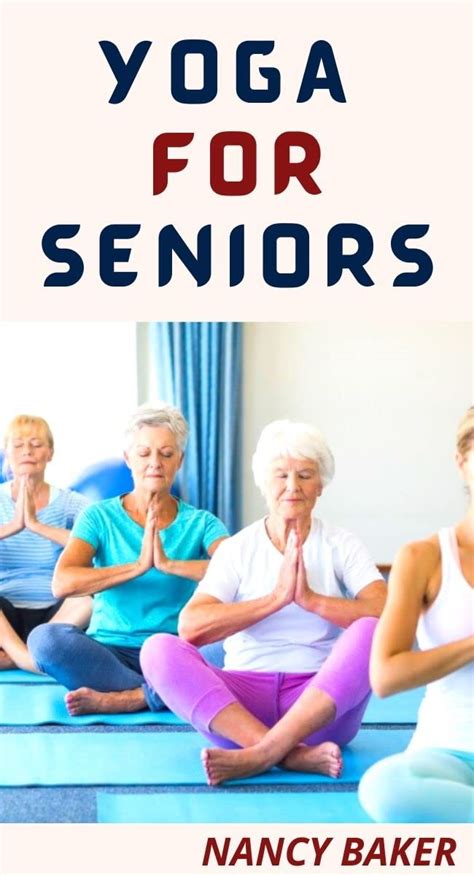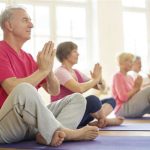Yoga for Seniors: Building Strength Safely and Effectively
Yoga is widely recognized as a beneficial practice for physical, mental, and emotional well-being. However, for seniors, it holds particular value in enhancing strength, flexibility, and balance, while ensuring safety. In this article, we delve into how seniors can engage with yoga to build strength safely, discussing its key principles, historical background, current trends, practical applications, case studies, and ethical concerns. Whether you’re a senior new to yoga, a caregiver, or an instructor, this guide offers comprehensive insight into making yoga accessible and sustainable.
Introduction
Aging brings challenges, such as reduced muscle mass, joint stiffness, and a higher risk of falls. Yoga has emerged as a popular tool for counteracting these issues. With its focus on controlled movement, breath, and mindfulness, yoga provides a low-impact way for seniors to maintain physical health. However, starting yoga later in life raises questions about safety, adaptation, and effectiveness. This article offers a detailed exploration of how seniors can benefit from yoga while minimizing risks.
Key Concepts
Before diving into practical applications, it is important to understand several foundational concepts in yoga practice for seniors:
- Adaptation: Modifying poses and routines to suit individual limitations, such as arthritis or reduced range of motion.
- Breath Control: Integrating breathing techniques to enhance relaxation and oxygen flow, crucial for seniors.
- Strength Building: Using body weight and gentle resistance to build muscle in a controlled manner.
- Balance: Focusing on stability to prevent falls, one of the leading risks for seniors.
- Mindfulness: The practice of remaining present, reducing stress and anxiety, both of which are common in older age.
Historical Context
Yoga has its roots in ancient India, with a history spanning over 5,000 years. However, it was traditionally a practice for the young and able-bodied, focusing heavily on spiritual development. It wasn’t until the 20th century that yoga became popular in the West, and more recently, the practice has adapted to accommodate various populations, including seniors. With the rise of therapeutic yoga in the last few decades, the focus shifted to accessibility, with styles like Chair Yoga and Restorative Yoga designed specifically for those with physical limitations. Understanding this evolution helps explain why yoga for seniors is more focused on safety and strength than on achieving difficult poses.
Current State Analysis
Today, yoga for seniors is gaining traction, with increasing numbers of older adults engaging in the practice. Yoga studios, senior centers, and even healthcare facilities now offer specialized classes that focus on senior-specific needs. Despite this, several challenges persist, such as inadequate instructor training and insufficient awareness of the importance of adaptation. To provide a clearer picture, here is a breakdown of current trends in senior yoga:
- Chair Yoga: A seated version of traditional yoga that minimizes strain on joints and offers stability.
- Restorative Yoga: This practice focuses on passive stretching and relaxation, ideal for those with limited mobility.
- Community Classes: Many senior centers now offer yoga tailored for their demographic, ensuring affordability and accessibility.
- Online Platforms: With the rise of online fitness classes, more seniors are accessing yoga from the comfort of their homes.
These approaches are making yoga more accessible, but concerns remain about the quality of instruction and individual adaptability.
Practical Applications
In this section, we outline how seniors can safely integrate yoga into their routine. Whether you’re an older adult or a caregiver, the following guidelines will help ensure that yoga is both safe and effective:
- Start Slow: Seniors should begin with gentle stretches and poses to gradually increase strength.
- Use Props: Blocks, straps, and chairs help modify poses and ensure safety.
- Focus on Breath: Breathing exercises, such as Pranayama, enhance relaxation and oxygen flow, reducing the risk of overexertion.
- Consult a Doctor: Especially for those with pre-existing conditions, it’s important to seek medical advice before starting any yoga practice.
- Professional Instruction: Engaging with certified instructors experienced in senior yoga is crucial for minimizing injury risks.
Here is a table comparing different types of yoga practices suitable for seniors, outlining benefits and limitations:
| Yoga Type | Benefits | Limitations |
|---|---|---|
| Chair Yoga | Provides stability, safe for those with joint pain or limited mobility | Limited range of motion, minimal strength-building |
| Restorative Yoga | Deep relaxation, improves flexibility | Less focus on strength, can be too passive for some |
| Hatha Yoga | Builds strength, improves flexibility | Requires modifications, risk of overexertion without proper instruction |
Case Studies
Let’s look at two case studies that illustrate the positive effects of yoga on seniors:
- Case Study 1: Mary, 70, started practicing Chair Yoga after a hip replacement. Within six months, she reported improved mobility and balance, reducing her reliance on a cane. She attributes much of her recovery to the ability to modify poses to suit her physical limitations.
- Case Study 2: John, 65, suffered from chronic back pain. After attending Restorative Yoga sessions twice a week, he experienced a significant reduction in pain levels. John also noticed better sleep patterns and increased energy throughout the day.
Stakeholder Analysis
Several groups have a vested interest in promoting yoga for seniors:
- Healthcare Providers: Doctors and physical therapists are increasingly recommending yoga as part of rehabilitation and pain management programs.
- Senior Centers: These organizations often host yoga classes and encourage older adults to engage in wellness activities.
- Fitness Instructors: Certified instructors specializing in senior yoga find an expanding market as the aging population grows.
Implementation Guidelines
Here are some steps for effectively implementing a yoga program for seniors:
- Instructor Training: Ensure that yoga teachers undergo specialized training in senior yoga to provide proper guidance and avoid injuries.
- Gradual Progression: Start with basic poses and gradually increase difficulty as seniors build strength and confidence.
- Small Class Sizes: Smaller groups allow instructors to give individual attention, ensuring safe practice.
- Use of Modifications: Make props like chairs and straps readily available to adjust poses based on ability levels.
- Medical Collaboration: Work closely with healthcare providers to tailor yoga sessions to the specific health needs of seniors.
Ethical Considerations
While yoga offers numerous benefits for seniors, there are important ethical considerations to address:
- Informed Consent: Seniors should fully understand the potential risks and benefits before engaging in yoga.
- Safety First: Pushing seniors beyond their limits, or failing to modify poses for safety, can result in injury.
- Inclusive Practices: Ensuring that yoga is accessible to seniors with disabilities or chronic conditions is crucial to equitable wellness.
Limitations and Future Research
Despite the clear benefits of yoga for seniors, there are still gaps in research that warrant attention. Some of these limitations include:
- Lack of Longitudinal Studies: Most research on yoga for seniors is short-term, leaving a gap in understanding long-term effects.
- Instructor Quality: The quality of instruction varies widely, and more regulation may be needed to ensure safety in senior-focused classes.
- Generalization of Findings: Existing studies often focus on relatively healthy seniors, leaving out data on those with severe disabilities or chronic illnesses.
Future research should aim to address these gaps, particularly focusing on long-term impacts and the development of standardized, safe practices for different senior populations.
Expert Commentary
Yoga for seniors is a rapidly growing field, offering multiple benefits ranging from increased strength and flexibility to better mental health. However, as this practice evolves, it is crucial that seniors, caregivers, and instructors work together to ensure that it is accessible, safe, and tailored to the unique needs of older adults. The success of yoga programs for seniors hinges on proper instruction, clear communication of risks and benefits, and ongoing research to refine best practices.








